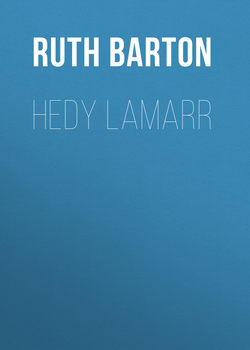Читать книгу Hedy Lamarr - Ruth Barton - Страница 14
На сайте Литреса книга снята с продажи.
5 The Most Beautiful Woman in the World
ОглавлениеSWITZERLAND WAS REGARDED by many German and Austrian refugees as a station on their way to France until 1938, when it introduced measures prohibiting Jews from crossing its borders. The better-heeled refugees, whose numbers now included Hedwig Kiesler, chose to spend the winter of 1936–1937 in St. Moritz before heading to Paris. The Swiss resort was a flurry of cocktails, parties, and gossip. As Erich Maria Remarque wrote in his diaries, some refugees began to sink under the boredom, for them drinking began in the early morning; others withdrew into themselves; fights broke out. Certain prominent Jewish dissidents were discomforted to find themselves rubbing shoulders with regular holidayers, whose political views differed sharply from their own. Among the filmmakers, the most prominent was Leni Riefenstahl, Hitler's favorite. Billy Wilder was also found in St. Moritz as were the Hollywood stars Eleanor Boardman and Kay Francis.1 Remarque had fled to Switzerland in 1933. His best-known antiwar novel, All Quiet on the Western Front, had been made into a hugely successful Hollywood film, and he was friendly with many people that Hedy would later encounter there, notably Charles Boyer. Back in Germany, Remarque was persona non grata for the same reasons he was feted in Hollywood; the premiere of All Quiet in Berlin had prompted a display of Nazi flag waving, with Goebbels marching out of the cinema to chants of “Judenfilm! Judenfilm!” Nazi supporters set off stink bombs in the auditorium along with releasing hundreds of white mice. Bizarrely, the Nazis then invited Remarque to become Minister of Culture for Prussia. When he declined and went into exile, they responded by banning his books and decreeing that anyone who owned a copy of All Quiet on the Western Front must relinquish it to the authorities.
Remarque was extraordinarily good-looking, deeply romantic, and a serial womanizer. He was also bored in St. Moritz and enchanted by meeting Hedy. She embodied, as his biographer writes, “all the qualities that Remarque found attractive—a stunning beauty, an actress, sophisticated, louche, German-speaking.” Soon they began an affair that lasted until the summer of 1937, when two events occurred in short succession: Hedy left for London and Remarque met the woman who was to become his greatest love, Marlene Dietrich.2
